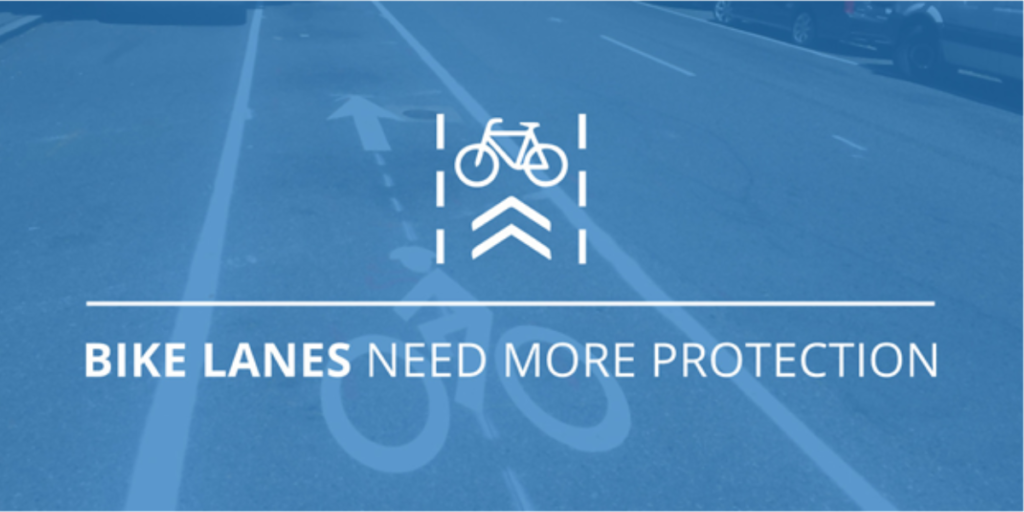
Bike Lanes Need More Protection – Over the past couple of decades, the popularity of cycling in the United States has grown and grown – and it does not show any sign of slowing down. For many, it is simply an excellent way to stay in shape. For others, it helps them to save a little money on gas and reduce their carbon footprint.
In cities, towns, and other urban areas, the vast majority of these cyclists travel on dedicated bike lanes. At first glance, you may think that these bicycle lanes seem like a safe and elegant way to allow motorists and cyclists to share the road. In reality, however, they can actually be quite dangerous.
If you have ever spent any time cycling around an urban area, you will no doubt have noticed that bike lanes are usually separated from cars, trucks, and other automobiles by little more than a line painted on the asphalt and a couple of feet of space. If one of the passing vehicles were to stray into the bike lane for any reason, there would be absolutely nothing to stop them from colliding with the cyclists who are using it.
Indeed, it is this lack of protection that is the crux of the problem with bike lane safety. To make cycling safer, local governments must invest in protective infrastructure.
How can cities and towns make bike lanes safer?
There is no one-size-fits-all solution to bike lane safety. The answer will ultimately depend on budgetary constraints, spatial constraints, and other factors. Generally speaking, however, most local governments should aim to implement one of the following solutions:
Protective Barriers
While painted lines will not stop a car from straying into the bike lane, a physical barrier can. Barriers can take forms ranging from utilitarian concrete walls to prettier solutions such as continuous planter boxes. As long as you have a sturdy object between motorists and cyclists, you will see positive results.
Separate Spaces
For cities that have the ability to do so, moving bike lanes off of the roadway and into their own separate space can work wonders for safety. In some areas, this can be as simple as creating a separate pathway 10-20 feet off of the street, separated by some trees. In others, it can be as complex as creating an entire bicycle highway system.
What do the statistics say?
You will not be surprised to learn that statistical reporting shows that increasing protection improves bike lane safety. When New York City added protection to a bike lane on 9th Avenue, they found that cyclist injuries were reduced by 57%. Their report even showed that the project reduced pedestrian injuries by 29% as bikes no longer needed to use the sidewalk to avoid cars.
Perhaps even more exciting, statistics show that when cities add protections to their bike lanes, more people use them. A report from Washington D.C.’s District Department of Transportation Bicycle Facility Evaluation showed that increasing protection on their Pennsylvania Avenue bike lane caused rider volume to soar by 200%. Put simply, when people feel safer, they will choose to cycle more.
What should I do if I am involved in a bicycle accident?
Until cities and towns across the United States improve their protective infrastructure, bike accidents will, unfortunately, continue to occur on a regular basis. If you are involved in an accident, your first priority should always be your own safety and wellbeing. Call for medical assistance immediately if you are in any pain. If possible take photos of the scene and your injuries and gather other evidence such as the names and contact information of witnesses and check the sequence of the traffic lights if that might be an issue.
Of course, there are also some legal factors to consider in the aftermath of your accident. Your police accident report will help to determine what your next steps should be. If the report determines that the accident was caused by another party and you have suffered injuries or property damage, you may be entitled to compensation.
Las Vegas Bike Accident Lawyers
If you would like to hire an attorney to help you with your bike accident case, you need to look no further than Cap and Kudler. Over the years, we have helped countless cyclists obtain the compensation they deserve, and we would love to help you too. Reach out to us at (702) 878-8778 to schedule an initial consultation.
